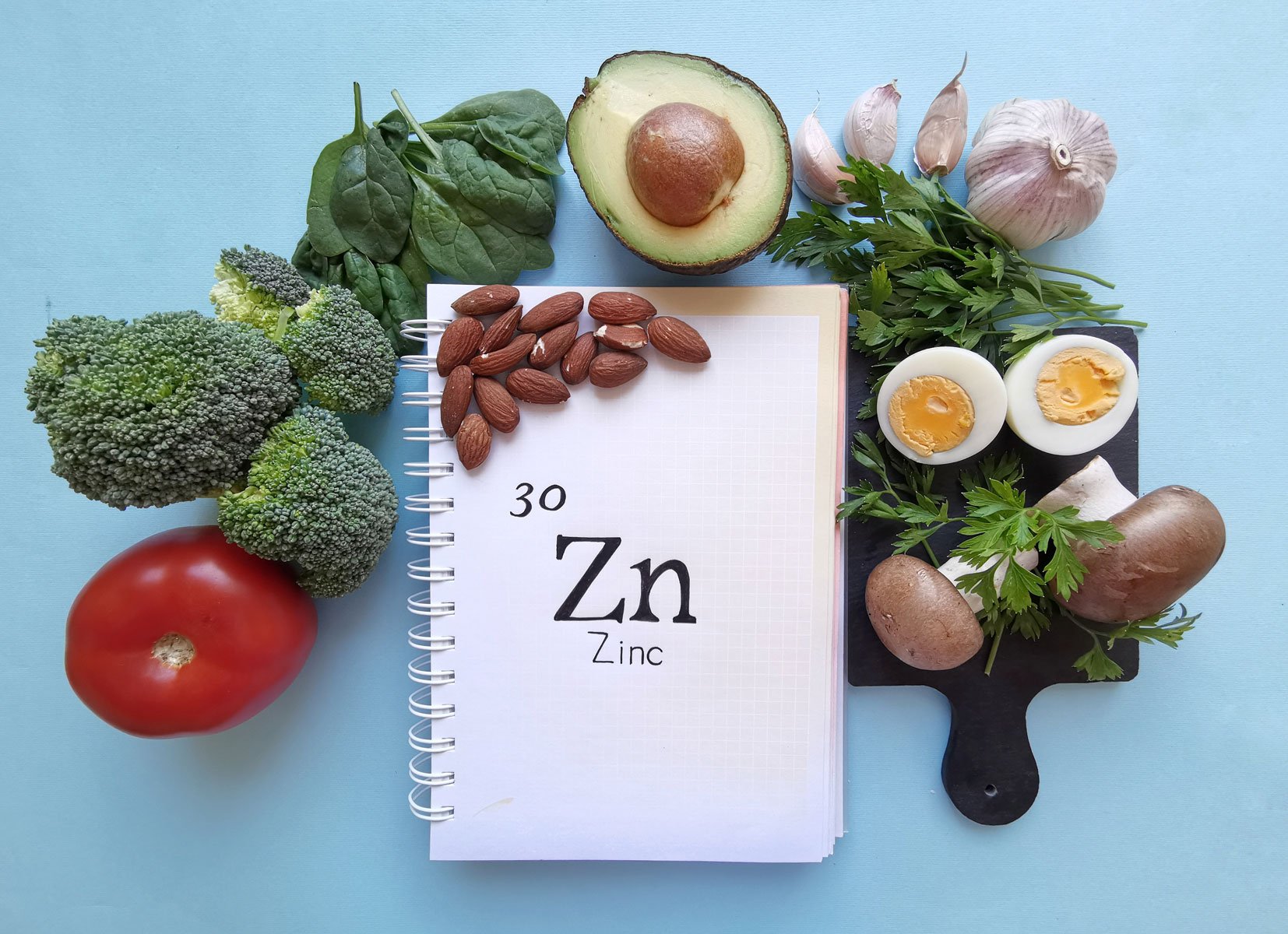Vitamin D is essential for bone health, as it promotes calcium absorption in the intestines, which keeps calcium blood levels in a healthy range and maintains normal bone mineralization. But it’s so much more than that. This micronutrient may also promote normal cardiovascular function and skeletal muscle contraction (due in part to its influence on calcium, which is considered an electrolyte); and because many of your body’s tissues possess vitamin D receptors, it plays diverse roles, from reducing inflammation to maintaining normal glucose metabolism. Here, we explore how vitamin D impacts metabolic health, plus the current thinking on optimal dose and how to get enough from food and supplements.
What Is Vitamin D?
Vitamin D is an essential vitamin—your body requires it to function. It’s naturally produced when sunlight hits your skin and triggers the conversion of 7-dehydrocholesterol to vitamin D3, which then enters circulation and is converted to active vitamin D (calcitriol) in a series of reactions by the liver and kidneys. That’s why it’s called the “sunshine vitamin.”
However, a variety of factors may limit our ability to produce enough vitamin D from the sun for optimal health, including how much time you spend outside, time of year, time of day, where you live, the amount of melanin in your skin, and even your age (adults over age 70 have about 75% less 7-dehydrocholesterol in their skin). Fortunately, vitamin D is found in food and supplements, so you’re not destined for deficiency.
How Does Vitamin D Affect Metabolic Health?
Getting adequate vitamin D has long been emphasized for bone health and more recently (during the COVID-19 pandemic) for its immune-supporting properties, but it plays key roles in metabolic health, too. Vitamin D receptors are located throughout the body, and low vitamin D is associated with a range of health issues, including insulin resistance, diabetes, high blood pressure, cardiovascular disease, and chronic inflammation.
But what’s the link, exactly? Vitamin D is thought to promote vasodilation (widening of blood vessels, which can improve blood flow and lower blood pressure) and interact with genes that support normal heart and blood vessel function. There are also many potential ways by which vitamin D influences insulin—the key hormone for maintaining stable blood glucose levels:
- Vitamin D receptors are found on pancreatic beta-cells (insulin-producing cells). When vitamin D binds, it impacts beta-cell function and helps regulate insulin secretion.
- Vitamin D regulates the flow of calcium ions into pancreatic beta-cells, and these calcium ions, in turn, help stimulate the secretion of insulin.
- Vitamin D may interfere with the production and the effects of certain proinflammatory cytokines that would otherwise damage or destroy insulin-secreting beta-cells.
- Vitamin D interacts with the vitamin D response element (VDRE), a sequence of DNA located on a specific region of the gene for insulin, which regulates insulin synthesis.
- Vitamin D stimulates osteoblasts (bone cells) to secrete a compound called osteocalcin, which can increase the number of pancreatic beta-cells and enhance production of adiponectin, a hormone that promotes insulin sensitivity and counters inflammation.
What Does the Research Say about the Benefits of Vitamin D Supplementation?
Diabetes, insulin resistance, and blood sugar are affected by multiple factors, and vitamin D status is just one potential link. The current body of research on supplemental vitamin D and metabolic health is somewhat mixed but overall promising. The main takeaway is that increasing vitamin D intake appears to impact people differently depending on their baseline levels (lower initial levels = bigger potential for vitamin D to help) and several other factors.
For example, in a large 2019 randomized controlled trial published in the New England Journal of Medicine, people with prediabetes who took 4,000 IU vitamin D per day did not have a significantly lower risk of diabetes after 2.5 years compared to a placebo group. But when the data was re-analyzed with different statistical methods, a decreased risk of diabetes was observed for people with severe vitamin D deficiency at baseline, people who perfectly adhered to the protocol, and people with a BMI below 30—the threshold for obesity. (Interestingly, carrying excess fat can trap vitamin D and inhibit the activity of enzymes needed to activate vitamin D, so supplements may not be as efficient at raising levels in people with obesity.)
Similarly, a 2018 meta-analysis of 23 studies suggested that vitamin D supplementation did not significantly reduce risk of Type 2 diabetes or its risk factors. But when factoring in participants’ initial vitamin D status and other health characteristics, researchers found that vitamin D lowered fasting blood glucose among non-overweight people and those with insufficient vitamin D levels. Supplementation also reduced insulin resistance among people with sufficient vitamin D levels, and reduced Type 2 diabetes risk for those who were overweight or had prediabetes—particularly if the dose was over 2,000 IU.
More recently, researchers performed a 2023 meta-analysis on three clinical trials and found a 15% reduced risk of diabetes over a three year period among participants taking vitamin D supplements (4,000 IU per day or 20,000 IU per week)—which jumped to 76% if they maintained high vitamin D levels of at least 50 ng/mL during the follow-up period. In another 2023 study, researchers analyzed data from 294 ,970 participants and found that levels of c-reactive protein (a biomarker of inflammation) dropped significantly as vitamin D levels increased, suggesting that correcting vitamin D deficiency may help curb chronic inflammation.
How Much Vitamin D Do You Need?
According to the National Institutes of Health (NIH), the recommended dietary allowance (RDA) for vitamin D from foods and/or supplements is 600 IU (15 mcg) per day for adults under age 70 and 800 IU (20 mcg) per day for adults over age 70. However, these RDAs are based on daily intakes sufficient to maintain bone health and normal calcium metabolism in most healthy people, and some experts believe they should be higher to promote optimal overall health.
The Endocrine Society and the American Association of Clinical Endocrinologists, for example, state that vitamin D levels should optimally fall above 30 ng/mL—and to achieve this, some people may need closer to 1,500-2,000 IU per day. Similarly, Levels advisor Dr. Mark Hyman says 2,000 IU per day is a good dose to achieve healthy vitamin D levels for the average adult (and, based on the research above, this amount may support metabolic health).
It’s also technically possible to synthesize your entire daily vitamin D quota from the sun—but this method becomes less practical during non-summer months, the farther you get from the equator, and the darker your skin tone. For example, at noon in Boston during the summer, it only takes about six minutes for people with white skin and 15 minutes for people with brown skin to synthesize 1,000 IU of vitamin D when their face, neck, hands, and arms are exposed; but during winter months, it would take them one hour and two hours, respectively, to synthesize this amount (and after 2 pm, it’s impossible due to the angle of the sun’s rays). The good news: You’re never at risk of getting too much vitamin D from the sun—the body actually has built-in mechanisms to prevent excess vitamin D production with prolonged sun exposure. However, too much sun still ups your risk of skin damage and cancer.
When you ingest vitamin D, however, it is possible to get too much. That’s why the NIH has set the tolerable upper limit (the highest amount unlikely to cause any adverse side effects) at 4,000 IU per day, and this is a good place to cap your intake from food and supplements, unless your doctor says otherwise. Two recent clinical trials on women over 50 appear to support this: Vitamin D supplementation improved cognitive function (at 2,000 IU per day) and decreased risk of falls (at 1,600-3,200 IU per day) but worsened these outcomes at intakes at or above 4,000 IU per day. Another reason not to overdo it? Vitamin D helps the body absorb more calcium, and excessive vitamin D can lead to high calcium levels in the blood, known as hypercalcemia, which can lead to nausea, vomiting, weakness, frequent urination, bone pain, and calcium kidney stones.
Keep in mind: Your optimal dose of vitamin D depends on your current vitamin D levels and overall health status (you may need more or less than the ranges mentioned above). So, it’s smart to get tested and work with a medical professional to determine your ideal intake.
How Do You Test Your Vitamin D Levels?
Testing is an excellent way to monitor the adequacy of your vitamin D intake and guide any adjustments. The most common and widely available test measures serum blood levels of 25-hydroxy vitamin D, or 25(OH)D, which is the most abundant circulating form of vitamin D. This isn’t part of any standard blood panels, so you may need to explicitly ask your doctor for this. Thresholds for what constitutes deficient and optimal levels differ among organizations and experts, but the ranges below are a good reference and generally in line with what functional medicine practitioners recommend (results are typically given as ng/mL).
Keep in mind: Deficiency refers to the level at which negative health effects related to low vitamin D intake have been relatively well documented, while the term “insufficient” refers to levels that are sub-optimal but not quite deficient. Meaning, you may not experience fatigue or weakened bones with a vitamin D insufficiency, but bodily processes that rely on vitamin D may still be negatively impacted in more subtle ways.
- Severely deficient: <12 ng/mL
- Deficient: <20 ng/mL
- Insufficient: 21- 29 ng/mL
- Optimal: >30 ng/mL
- Excess: >100 ng/mL
- Toxicity: >150 ng/mL
Symptoms of low vitamin D levels aren’t always obvious. For insufficiency and mild deficiency, there may not be any obvious symptoms, but severe deficiency could manifest as weak bones, bone pain, and muscle weakness. Excess vitamin D, as mentioned above, may lead to symptoms of hypercalcemia (high calcium in the blood): nausea, vomiting, and kidney stones.
An estimated 41% of U.S. adults are vitamin D insufficient and 29% are vitamin D deficient. The following groups are at higher risk:
- People with limited sun exposure: Minimal time outdoors, wearing full coverage clothing, constantly slathering on a high-SPF sunscreen, and living in northern latitudes all limit vitamin D synthesis from the sun. If you live in Boston, for example, the sun’s rays are too weak between November and February to produce much vitamin D in the skin.
- People with dark skin: Having a higher amount of melanin in the skin reduces the amount of vitamin D you can synthesize from the sun. However, it’s unclear how much this drives poor health outcomes, since research shows Black individuals have lower rates of bone fracture and osteoporosis than white individuals.
- Older adults: Older adults have much lower levels of 7-dehydrocholesterol, the vitamin D precursor found in the skin that’s activated with sun exposure.
- People with obesity: Having high amounts of body fat can trap vitamin D and inhibit the activity of enzymes needed to activate vitamin D, contributing to lower levels.
- People with celiac disease, Crohn’s disease, ulcerative colitis: Vitamin D is fat soluble, so digestive disorders that limit fat absorption also limit vitamin D absorption.
What Are the Best Foods for Vitamin D?
Foods that contain vitamin D are limited, but these are some of the top natural sources:
- Trout (645 IU per 3 ounces, cooked)
- Salmon (570 IU per 3 ounces, cooked)
- Sardines (46 IU per 2 sardines, canned)
- Light tuna (40 IU per 3 ounces, canned)
- Mushrooms exposed to UV light (366 IU per ½ cup, raw)
- Egg with yolk (44 IU per large egg, scrambled)
Fortified foods are a good way to boost vitamin D intake, since there are few natural sources. Just make sure they fit with your other goals, and avoid anything with added sugars or refined carbohydrates that can spike blood sugar. For example, unsweetened almond or soy milk (and other nut or seed milks) make a great choice (100-144 IU per cup), but skip fortified foods and beverages like oat milk, rice milk, orange juice, and refined grains.
Rest assured, as long as your digestive system is functioning properly, obtaining vitamin D from food appears to be just as effective (or even more so) as sun exposure at raising vitamin D levels in the body.
Should You Take a Vitamin D Supplement?
Supplements are a good way to boost your levels if you’re insufficient or deficient, particularly since it can be difficult to consistently get enough vitamin D from food and the sun—and based on the research above, restoring healthy vitamin D levels may support a variety of positive metabolic outcomes (e.g., improved fasting blood sugar, reduced diabetes risk, inflammation). But remember, supplements may not have much benefit if you’re already in an optimal range. In one study, 20-30 minutes of mid-day sun exposure raised levels 2.2 ng/mL while daily supplementation with 500 IU of vitamin D3 raised levels by 8.5 ng/mL after 8 weeks.
There are two main forms of vitamin D found in supplements and it’s widely acknowledged that vitamin D3 (cholecalciferol) is more effective than vitamin D2 (ergocalciferol) at raising serum blood levels—some studies suggest it may be twice as effective. Today, most supplements contain vitamin D3, which is also the form naturally present in cod liver oil.
You can find vitamin D supplements in a range of dosages (often from 400 IU to 5,000 IU) so you can better customize your intake based on your needs. Typically, cod liver oil contains around 1,000 IU per teaspoon, along with vitamin A and omega-3 fatty acids. Consider taking vitamin D (a fat-soluble vitamin) with a meal or snack that contains some fat to aid absorption.
For people who are overweight or obese, consider pairing vitamin D with magnesium. Magnesium supports the function of enzymes needed to activate vitamin D, which can be impaired when you carry excess body fat. In one recent study, taking 360 mg magnesium glycinate and 1000 IU vitamin D three times a day was more effective at raising levels than taking vitamin D alone.
Vitamin D is typically well tolerated but may interfere with certain medications including the weight loss drug Orlistat (Xenical and alli), cholesterol-lowering statins (Lipitor, Altoprev, Mevacor, FloLipid, Zocor), steroid drugs (Deltasone, Rayos, Sterapred), and thiazide diuretics (Hygroton, Lozol, Microzide). If you take one of these or other medications regularly, be sure to talk to your doctor about the safest way to support healthy vitamin D levels.
 Want to learn more about your metabolic health?
Want to learn more about your metabolic health?
Levels, the health tech company behind this blog, can help you improve your metabolic health by showing how food and lifestyle impact your blood sugar. Get access to the most advanced continuous glucose monitors (CGM), along with an app that offers personalized guidance so you can build healthy, sustainable habits. Click here to learn more about Levels.

 Want to learn more about your metabolic health?
Want to learn more about your metabolic health?






